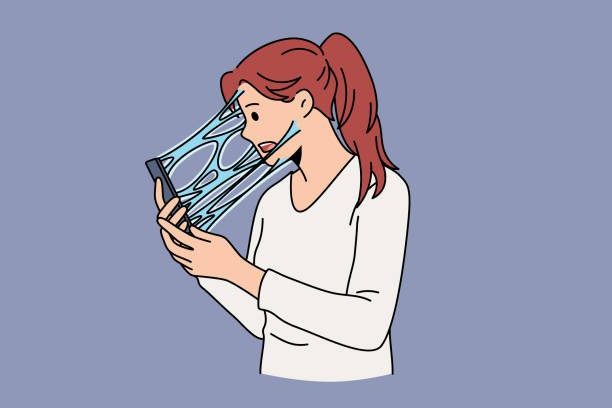Obsessed to Technology: How iPhones Are Designed to Keep You Addicted
Young stressed woman cartoon character standing feeling connected to her phone.
Grab your iPhone and check your screen time right now; if it is over six hours, you are addicted. Buzzing notifications, bright colors, and an infinite feed make phones extremely hard to put down, and that is the point. The quick advancement in technology led to the omnipresent use of these devices. This increasing addiction has made it clear that excessive cell phone usage can harm a person’s psychological and physical well-being.
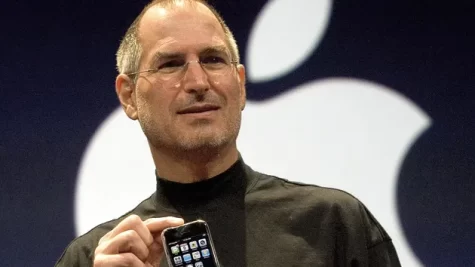
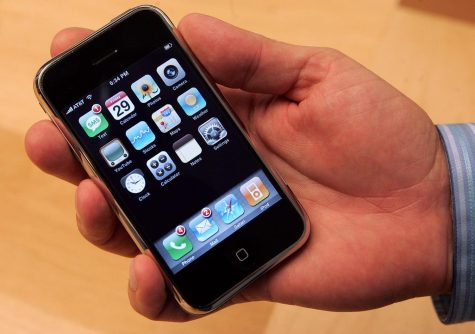
The iPhone has developed at a high-speed rate, significantly deviating from Steve Jobs’s original design. The first iPhone had a screen of 3.5 inches with 160 pixels per inch. It was 11.6 millimeters thick and had a 2-megapixel camera. There were three leading apps on the phone, the iPod, a Phone app, and an internet communication device. On the iPod, you could listen to music and watch videos. On the phone app, you can make calls and leave voicemails. And the internet communication device allowed you to look up anything online and send emails. The limit on apps made iPhones useful for only a few things, so people did not constantly need to check their phones. Another critical aspect of the original design was that the iPhone fit ideally in the palm of one’s hand, which should match the hand’s ergonomics. This made the phone easier to use, ultimately the primary goal. In Job’s 2007 keynote, where he introduced the iPhone, he said, “iPhone is like having your life in your pocket.” The phone had everything a person could need.
Now, iPhones are significantly different. The largest iPhone, the 12 Pro Max, has a screen of 6.68 inches, almost twice the size of the original. The pixels are now 460, with 7.85 millimeters in thickness and 48 megapixels in the primary camera. The size increase in the screen makes viewing videos, applications, and social media much more enjoyable, ultimately increasing iPhone usage. Users can browse and download approved apps developed with the iOS SDK from the app store. These apps can include games and social media. Access to a wide range of applications has increased iPhone addiction. Here is why, as technology and apps become more accessible, phones become more useful than ever; they become tools that can be used throughout the day. Social media was also a significant advancement that increased device usage. All these applications allowed people to literally have their lives in their pockets. Because of this, spending long periods without your phone is hard.
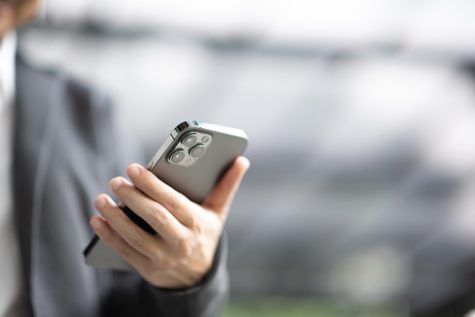
So what exactly makes iPhones so addictive? The features on the iPhone, such as bright colors, notification sounds, and an endless feed, trigger the brain’s ultimate feel-good neurotransmitter: dopamine. Dopamine is a chemical the brain releases when something good happens to us; this is how the brain remembers actions that produce enjoyable rewards, encouraging us to repeat these actions. Piedmont Healthcare says, “Our brains want more dopamine, which triggers the habit of checking our phones constantly throughout the day.”
Producers trigger these neurotransmitters by adding fascinating product features and increasing dopamine release. How exactly do they decide what features to add? According to Business Insider, a former Apple employee who preferred to remain anonymous said, “In any product you make, you have to make sure the experience is more compelling than the feature.” The main goal of new features is to mesmerize the users; by making them enjoyable, people will spend more time on their phones. Many apps use various psychological techniques to engage users: notifications, rewards, and other positive reinforcement. Apps similar to TikTok use visually appealing features and the ability to scroll endlessly, keeping users entertained and making it easy to quickly consume large amounts of content. Advances are also critical. One of the most recent iPhone advances is making them waterproof. This allows people to take their devices into the pool, the ocean, and, in some instances, the shower. Now, cell phones can be used in places where they typically are not.
Psychological impacts of smartphone addiction include fear of missing out (FOMO), anxiety, disrupted sleep patterns, depression, and behavioral and compulsive disorders. According to Cogent Psychology, users’ fear of missing out can exacerbate anxiety. For example, someone might feel unimportant when they find out what their friends are doing without them through social media posts. In response, they feel like they must regularly check their phones to stay up to date on current events.
iPhones also cause attachment issues. Attachment describes an emotional bond, usually between humans, and how its separation leads to distress. Similarly, iPhone users have created an attachment to their devices, so many feel stressed when separated from their phones; this is called Nomophobia. Smartphone addiction also affects sleep patterns. The body relies on circadian rhythms, a 24-hour process that mimics the rise and fall of the sun, to know when to initiate sleep. A part of the brain called the suprachiasmatic nucleus uses light cues to determine if it is time to sleep. This is why, in the darkness, a person typically feels tired; the body releases melatonin, signaling it is time to sleep. According to The Sleep Doctor, “…our brains are very sensitive to light, and the blue light emitted from cell phones and other electronic devices delays melatonin production. Lack of melatonin can make it difficult to fall asleep, leading to insomnia and fatigue over time.”
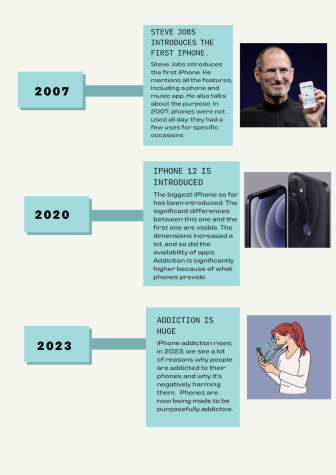
The rapid advancement in technology led to the ubiquitous use of devices. The abundance of psychologically appealing applications that trigger dopamine release has made iPhones a primary aspect of people’s lives, making it challenging to put them down.
As addiction increases, psychological and physical effects become more prominent, so it is essential to be aware of the addictive qualities and to establish healthy boundaries when using them. Some alternatives include turning off your device an hour before bed, setting screen times to curb your use, or placing your device out of reach. By being mindful of your phone use, you can help ensure that it enhances your life rather than distracting you from it.
Your donation will support the student journalists of Riviera Preparatory School. Your contribution will allow us to purchase equipment and cover our annual website hosting costs.

Senior Cristina Mascarua is beginning her third year in Multimedia and excited for another year of publishing in her new role as Content Editor. Her favorites...
























